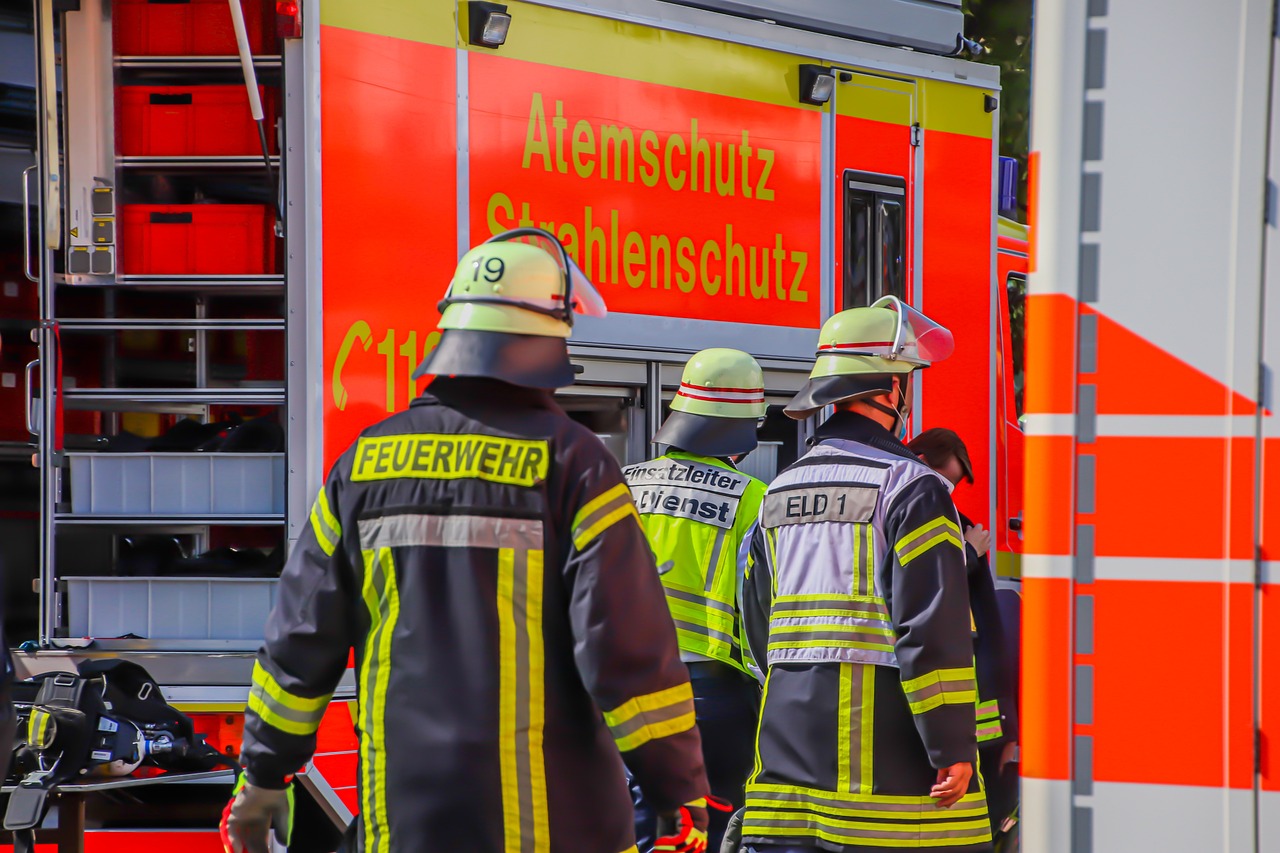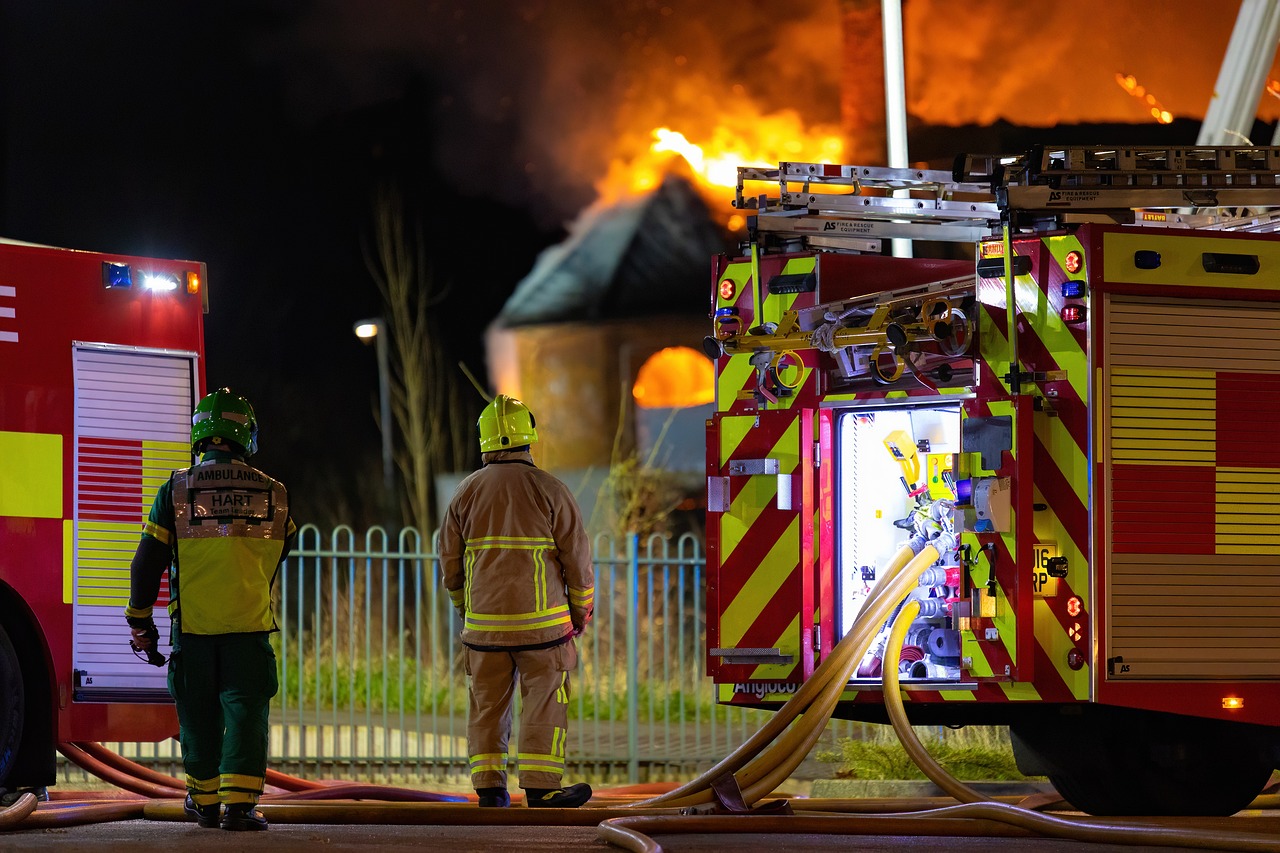Emergency Preparedness and Climate Change - The Connection
In today's world, the connection between emergency preparedness and climate change has never been more critical. As we witness the dramatic shifts in our climate, it’s essential to recognize how these changes are not just distant threats but immediate challenges that demand our attention. With every passing year, we see an uptick in the frequency and intensity of natural disasters — think about the devastating hurricanes, wildfires that seem to rage uncontrollably, and floods that sweep through communities without warning. This is not just a coincidence; it’s a direct consequence of our changing climate.
Emergency preparedness is about more than just having a plan; it’s about creating a culture of resilience within our communities. It's about understanding that when disaster strikes, it’s often too late to start thinking about what to do. By proactively addressing the risks posed by climate change, we can significantly reduce the impact on our lives, properties, and ecosystems. This article will guide you through the essential connections between climate change and emergency preparedness, emphasizing the need for action and engagement at all levels of society.
Imagine your community as a ship navigating through stormy seas. Without a sturdy hull, a reliable crew, and a well-thought-out navigation plan, that ship is at the mercy of the waves. Similarly, communities must develop strong emergency preparedness strategies to weather the storms brought on by climate change. As we delve deeper into this topic, we’ll explore how understanding the impacts of climate change can lead to better planning, increased community involvement, and ultimately, a safer future for everyone.

Understanding Climate Change Impacts
Climate change is not just a buzzword; it’s a reality that’s reshaping our planet in profound ways. Imagine waking up one day to find that the weather patterns you’ve known all your life have completely transformed. That’s the world we’re heading towards, and it’s crucial to understand how these changes affect our daily lives. The impacts of climate change are far-reaching, leading to an alarming increase in the frequency and severity of natural disasters. From devastating floods to ferocious hurricanes and raging wildfires, the consequences of a warming planet are becoming increasingly evident.
One of the most striking effects of climate change is the alteration of weather patterns. As global temperatures rise, the atmosphere can hold more moisture, which translates into heavier rainfall and more intense storms. This means that regions that have historically been safe from flooding may suddenly find themselves inundated. For instance, cities like Houston and New Orleans have experienced unprecedented flooding events in recent years, causing widespread destruction and displacing thousands of residents.
Moreover, the intensity of hurricanes has also escalated due to warmer ocean temperatures. When you think about hurricanes, you might picture a swirling mass of destruction, but what’s even more frightening is that these storms are now packing more punch than ever before. The increase in wind speeds and rainfall associated with hurricanes means that when they make landfall, the damage is often catastrophic. In 2020, we witnessed hurricanes like Laura and Delta wreak havoc across the Gulf Coast, leaving communities in ruins.
Wildfires are another alarming consequence of climate change. Rising temperatures and prolonged drought conditions create the perfect storm for wildfires to ignite and spread. Areas that were once lush and green can quickly turn into tinderboxes, making them susceptible to fire. Just think about the wildfires that swept through California and Australia in recent years, devastating ecosystems and displacing countless families. The smoke from these fires doesn't just stay local; it travels great distances, impacting air quality and health far beyond the flames.
In addition to these immediate threats, climate change also poses long-term risks to food and water security. As weather patterns shift, agricultural productivity can decline, leading to food shortages and increased prices. Regions that rely on specific crops may find themselves struggling to adapt to new growing conditions, which can lead to economic instability and hunger. Water sources, too, are under threat. Changes in precipitation patterns can lead to droughts in some areas while causing flooding in others, making it difficult to manage this vital resource.
To put it simply, the impacts of climate change are not just environmental; they’re social, economic, and political. Communities that are already vulnerable—like low-income populations and marginalized groups—are often hit the hardest. This creates a cycle of disadvantage that can be difficult to break. Therefore, understanding these impacts is not just about recognizing the problem; it’s about taking proactive steps to prepare for the future. By acknowledging the realities of climate change, we can begin to develop strategies that enhance community resilience and improve emergency preparedness.
In conclusion, the connection between climate change and natural disasters is undeniable. As we navigate this new reality, it’s essential to stay informed and engaged. Whether it’s through local initiatives, community meetings, or simply spreading awareness, every action counts. Together, we can build a more resilient future that not only anticipates these challenges but also equips us to face them head-on.

The Importance of Emergency Preparedness
Emergency preparedness is not just a buzzword; it's a vital lifeline that can mean the difference between chaos and calm during a disaster. As climate change continues to reshape our world, the frequency and intensity of natural disasters are on the rise. From devastating hurricanes to catastrophic wildfires, the need for effective emergency preparedness has never been more pressing. But what does it really mean to be prepared? It goes beyond having a first aid kit or a few canned goods in the pantry. It involves a comprehensive strategy that encompasses risk assessment, community involvement, resilient infrastructure, and continuous training.
When we talk about minimizing the impact of disasters, we are referring to proactive measures that can save lives and property. Effective preparedness plans are like a safety net that cushions the blow of unexpected events. They help communities respond quickly, recover efficiently, and rebuild stronger than before. Think of it this way: just as a well-trained athlete prepares for a competition, communities must train and prepare for potential emergencies. This preparation not only equips them with the necessary tools but also instills a sense of confidence and unity.
One key component of emergency preparedness is understanding the specific risks that a community faces. Each region has its unique challenges, whether it’s floods in low-lying areas or wildfires in dry climates. By conducting thorough risk assessments, communities can identify their vulnerabilities and tailor their emergency plans accordingly. This approach ensures that resources are allocated effectively and that everyone knows their role when disaster strikes. For instance, a coastal community might prioritize evacuation routes and shelters, while a mountainous area might focus on firebreaks and water supply management.
Moreover, community involvement in the planning process is crucial. When citizens are engaged and their insights are considered, the plans become more relevant and practical. It's about creating a culture of preparedness where everyone feels responsible and empowered. Imagine a neighborhood where families come together to discuss their emergency plans, share resources, and even conduct mock drills. This kind of collaboration not only strengthens the community's response capabilities but also fosters a sense of belonging and solidarity.
Another essential aspect of emergency preparedness is training and drills. Regularly scheduled training sessions and simulations can dramatically enhance a community's readiness for climate-related emergencies. These drills are not just for show; they are critical for identifying gaps in the plans and ensuring that everyone knows what to do when the time comes. Think of it as a fire drill in school—repeated practice helps to engrain the actions needed into memory, making the response almost instinctive.
In conclusion, the importance of emergency preparedness cannot be overstated. It is a multifaceted approach that involves understanding risks, engaging the community, and ensuring that everyone is trained and equipped to handle emergencies. As we face an uncertain future shaped by climate change, investing in preparedness is not just wise; it is essential for the survival and resilience of our communities.
- What is emergency preparedness?
Emergency preparedness refers to the planning and training that individuals and communities undertake to respond effectively to disasters. - Why is community involvement important?
Community involvement ensures that emergency plans are relevant and practical, incorporating the insights and needs of local residents. - How often should training and drills be conducted?
Training and drills should be conducted regularly, ideally at least once a year, to keep skills fresh and identify any gaps in plans. - What role does government play in emergency preparedness?
Government agencies are crucial in developing policies, providing funding, and coordinating efforts between different organizations for effective emergency response.

Risk Assessment and Planning
When it comes to emergency preparedness, the first step is understanding the specific risks that a community faces. This is where risk assessment and planning come into play. Imagine trying to navigate a stormy sea without knowing what lies beneath the waves. Similarly, without a thorough assessment of potential hazards, communities are sailing blind into the turbulent waters of climate change. Risk assessment involves identifying vulnerabilities, evaluating the likelihood of various disasters, and understanding their potential impacts on the community. It’s not just about knowing that floods might happen; it’s about understanding how often they occur, who is most affected, and what resources are available to mitigate those risks.
Every region has its unique set of challenges. For instance, coastal areas may be more susceptible to hurricanes and rising sea levels, while inland regions might face increased risks of wildfires and droughts. Therefore, tailored emergency plans are essential. These plans should be crafted based on the specific climate risks that each community faces. This is akin to having a personalized roadmap that guides you through the safest routes during a storm. By conducting thorough risk assessments, communities can prioritize their preparedness efforts and allocate resources effectively.
To illustrate the importance of risk assessment, let’s consider a hypothetical community located in a flood-prone area. A detailed risk assessment might reveal:
| Risk Factor | Likelihood | Potential Impact |
|---|---|---|
| Flooding | High | Severe damage to homes and infrastructure |
| Hurricanes | Medium | Displacement of residents and property damage |
| Wildfires | Low | Loss of natural resources and air quality issues |
This table not only highlights the risks but also emphasizes the importance of planning. Knowing that flooding is a high-risk factor, the community can focus on creating effective flood management systems, establishing early warning systems, and ensuring that evacuation routes are clear and accessible. It’s about making informed decisions that can save lives and property.
Moreover, community involvement in the planning process is crucial. Engaging residents in discussions about their experiences and insights can lead to more effective and realistic emergency plans. After all, who knows the local landscape better than those who live there? By fostering a sense of ownership and responsibility, communities can create a culture of preparedness that goes beyond just having a plan on paper.
In conclusion, risk assessment and planning are the cornerstones of effective emergency preparedness. By understanding the unique challenges posed by climate change and involving the community in the planning process, we can build a resilient future where everyone is prepared for whatever nature throws our way.
- What is risk assessment in emergency preparedness? Risk assessment is the process of identifying vulnerabilities and evaluating the likelihood and potential impacts of various disasters on a community.
- Why is community involvement important in planning? Engaging the community ensures that the emergency plans are realistic and tailored to the specific needs and insights of the residents.
- How can communities prepare for climate-related disasters? Communities can prepare by conducting thorough risk assessments, creating tailored emergency plans, and fostering public awareness and training programs.

Community Involvement in Planning
When it comes to emergency preparedness, one of the most powerful tools we have is the community itself. Imagine a neighborhood where every resident feels empowered to contribute to their safety and resilience. This is not just a dream; it is achievable through active community involvement in planning processes. Engaging local citizens in emergency planning fosters a sense of ownership and responsibility, making them more likely to act decisively when disasters strike. But how do we make this happen?
First and foremost, it's essential to create platforms for open dialogue. Town hall meetings, workshops, and online forums can serve as venues where community members express their concerns, share their experiences, and contribute ideas. These discussions can illuminate unique local vulnerabilities that might otherwise be overlooked by emergency planners. For instance, a community living near a river might highlight flood risks that city officials are unaware of, leading to more tailored and effective emergency strategies.
Moreover, incorporating diverse voices is crucial. Every community comprises various demographics, including different ages, backgrounds, and abilities. By actively seeking input from all segments of the population—whether through surveys, focus groups, or outreach programs—emergency plans can be more inclusive and effective. This approach not only strengthens the plan but also builds trust between residents and local authorities.
Additionally, educational initiatives can empower citizens with knowledge about emergency procedures and resources. For example, workshops on first aid, evacuation routes, and emergency kits can equip individuals with the skills they need to respond effectively in a crisis. When people feel prepared, they are more likely to remain calm and help others, creating a ripple effect of resilience throughout the community.
Lastly, consider forming community response teams. These groups can be trained to act as first responders in the immediate aftermath of a disaster, providing critical support until professional help arrives. By fostering a culture of preparedness, communities can significantly enhance their collective resilience against climate-related emergencies.
In conclusion, community involvement in emergency planning is not just beneficial; it is essential. By harnessing the collective wisdom and resources of local residents, we can create robust emergency preparedness plans that truly reflect the needs and strengths of the community. So, let’s roll up our sleeves and get involved—because when we work together, we can weather any storm.
- Why is community involvement important in emergency planning? Community involvement ensures that the unique needs and vulnerabilities of local residents are addressed, leading to more effective and inclusive emergency plans.
- How can communities engage in emergency planning? Communities can engage through town hall meetings, surveys, workshops, and forming response teams to foster collaboration and share knowledge.
- What are the benefits of having a community response team? Community response teams can provide immediate assistance during emergencies, helping to stabilize situations until professional responders arrive.
- How can I get involved in my community's emergency planning efforts? Reach out to local government offices or community organizations to find out about meetings, volunteer opportunities, and training programs related to emergency preparedness.

Training and Drills
When it comes to emergency preparedness, the phrase "practice makes perfect" couldn't be more relevant. Regular training and drills are not just beneficial; they are essential for ensuring that communities are ready to face climate-related emergencies head-on. Imagine a fire drill at school or a safety exercise at your workplace. These activities might seem mundane, but they serve a crucial purpose: to prepare individuals for real-life situations where every second counts.
Training programs can vary widely, but they all share a common goal: to equip participants with the knowledge and skills necessary to respond effectively during a crisis. For instance, community workshops can teach residents about the specific risks they face, such as flooding or wildfires, and how to mitigate these hazards. Additionally, hands-on drills—like evacuation simulations—allow people to practice their responses in a controlled environment, making them feel more confident when the real thing happens.
Consider the following types of training that can significantly enhance community readiness:
- Basic First Aid and CPR: Knowing how to provide basic medical assistance can save lives.
- Emergency Communication: Understanding how to communicate effectively during a disaster ensures that everyone stays informed and safe.
- Evacuation Procedures: Familiarizing residents with evacuation routes and procedures can reduce panic during an actual emergency.
Moreover, the importance of involving local organizations in these training sessions cannot be overstated. By partnering with local schools, businesses, and non-profits, emergency management agencies can reach a broader audience and create a culture of preparedness within the community. This collaborative approach not only enhances the training experience but also fosters a sense of unity and shared responsibility among residents.
In addition to community-based training, it's vital for local governments and organizations to conduct regular drills. These drills should simulate various scenarios, from severe storms to chemical spills, allowing participants to practice their responses in real-time. The key is to create a safe environment where mistakes can be made and learned from without the consequences of an actual emergency. After each drill, conducting a thorough debriefing helps identify strengths and areas for improvement, ensuring that the community is better prepared for future events.
Ultimately, the goal of training and drills is not just to check a box on a preparedness plan but to instill a sense of readiness and resilience in the community. When individuals feel confident in their abilities to respond to emergencies, they are more likely to take proactive measures that can mitigate risks and protect themselves and their loved ones. So, let’s get out there, roll up our sleeves, and make sure we’re ready for whatever Mother Nature throws our way!
Q: How often should communities conduct training and drills?
A: It's recommended that communities conduct training and drills at least once a year, with more frequent sessions for high-risk areas.
Q: What types of emergencies should be included in training?
A: Training should cover a range of scenarios, including natural disasters like floods and hurricanes, as well as man-made emergencies such as chemical spills.
Q: Who should be involved in the training process?
A: Local residents, emergency responders, schools, businesses, and non-profit organizations should all be included to create a comprehensive preparedness program.

Building Resilient Infrastructure
This article explores the intersection of emergency preparedness and climate change, highlighting the importance of proactive measures to mitigate risks and enhance community resilience in the face of climate-related disasters.
A detailed overview of how climate change affects weather patterns, leading to increased frequency and severity of natural disasters such as floods, hurricanes, and wildfires, thereby necessitating improved emergency preparedness strategies.
Emergency preparedness is crucial for minimizing the impact of disasters. This section discusses the key components of effective preparedness plans and the role they play in protecting communities from climate-related emergencies.
Conducting thorough risk assessments helps identify vulnerabilities within communities. This subheading emphasizes the significance of tailored emergency plans that address specific climate risks faced by different regions.
Engaging local communities in emergency planning fosters resilience. This section highlights strategies for involving citizens in the planning process to ensure that their needs and insights are considered.
Regular training and drills are essential for effective emergency preparedness. This part discusses the types of training programs that can enhance community readiness for climate-related emergencies.
Building resilient infrastructure is not just about constructing stronger buildings; it’s about creating a system of safety that can withstand the unpredictable forces of nature. As climate change continues to alter our environment, the infrastructure we rely on must evolve as well. Think of it like a sturdy tree that bends but doesn’t break in the wind. This resilience is crucial in ensuring that communities can recover quickly from disasters.
One of the primary focuses in developing resilient infrastructure is to integrate sustainable practices into urban planning. This means designing and constructing buildings and roads that can endure extreme weather conditions, such as heavy rainfall or intense heat. For instance, using materials that can withstand flooding or implementing green roofs can significantly reduce the impact of climate-related disasters. Here are some key aspects to consider:
- Flood-resistant designs: Elevating buildings and using permeable materials can help manage excess water.
- Energy-efficient systems: Incorporating renewable energy sources can reduce dependence on vulnerable power grids.
- Smart technology: Utilizing smart sensors can provide real-time data to monitor infrastructure health and environmental conditions.
Moreover, resilient infrastructure is not merely about physical structures; it also encompasses the social fabric of communities. Infrastructure planning should involve community input to ensure that the needs of all residents are met. For example, creating public spaces that can double as emergency shelters during disasters serves a dual purpose and fosters a sense of community.
To illustrate the importance of resilient infrastructure, consider the following table that compares traditional infrastructure with resilient infrastructure:
| Aspect | Traditional Infrastructure | Resilient Infrastructure |
|---|---|---|
| Design | Standard materials, minimal adaptation | Adaptive materials, climate-responsive design |
| Maintenance | Reactive maintenance | Proactive monitoring and maintenance |
| Community Involvement | Limited public engagement | Active community participation in planning |
In conclusion, building resilient infrastructure is a multifaceted approach that requires collaboration between engineers, urban planners, and the community. By prioritizing sustainability and community involvement, we can create a robust framework that not only protects against climate-related disasters but also enhances the overall quality of life for residents.
Effective policies and adequate funding are critical for enhancing emergency preparedness. This section examines the role of government and private sectors in supporting preparedness initiatives through legislation and financial resources.
Raising public awareness is essential for effective emergency preparedness. This subsection discusses the importance of educational campaigns that inform communities about the risks of climate change and preparedness measures.
Inter-agency collaboration is key to effective emergency response. This section highlights the importance of partnerships between government, NGOs, and community organizations in enhancing preparedness efforts.
Q: Why is resilient infrastructure important in the context of climate change?
A: Resilient infrastructure is crucial because it helps communities withstand and recover from climate-related disasters, reducing the overall impact on lives and property.
Q: How can communities get involved in infrastructure planning?
A: Communities can participate by attending public meetings, providing feedback on plans, and collaborating with local officials to ensure their needs are met.
Q: What are some examples of resilient infrastructure?
A: Examples include flood-resistant buildings, green roofs, and energy-efficient systems that utilize renewable energy sources.

Policy and Funding for Preparedness
When we talk about emergency preparedness, we can’t overlook the critical role of policy and funding. These two elements act as the backbone of any successful strategy aimed at mitigating the risks associated with climate-related disasters. Without robust policies and sufficient financial resources, even the best-laid plans can fall flat. Think of it like building a house on sand; no matter how beautiful the design, the foundation will ultimately determine its stability.
Effective policies provide a framework for action, guiding how communities respond to emergencies. They set the stage for collaboration among various stakeholders, including government entities, non-profit organizations, and local communities. For instance, federal policies can dictate how funds are allocated for disaster preparedness at the state and local levels. This is crucial because a well-funded plan can lead to better training, enhanced infrastructure, and more comprehensive public awareness campaigns. But how do we ensure that the funding reaches the right places?
One approach is to establish grant programs specifically aimed at enhancing emergency preparedness. These grants can be awarded to local governments and organizations that demonstrate a clear need for funding. They can be used for various initiatives, such as:
- Developing community training programs
- Conducting risk assessments
- Upgrading infrastructure to withstand climate impacts
- Implementing public awareness campaigns
However, it’s not just about throwing money at the problem. There needs to be a strategic approach to how funds are allocated. For example, a needs-based assessment can help identify which communities are most vulnerable to climate change impacts and prioritize funding accordingly. This ensures that resources are being used where they are needed the most, much like a doctor prescribing treatment based on the severity of a patient's condition.
Additionally, collaboration between various government agencies can amplify the effectiveness of funding. By pooling resources and sharing expertise, agencies can create more comprehensive preparedness plans that address multiple threats. For instance, the Department of Homeland Security can work alongside the Environmental Protection Agency to ensure that climate change considerations are integrated into emergency response plans. This inter-agency collaboration is not only efficient but also essential for building a resilient community.
Moreover, public-private partnerships can also play a significant role in enhancing preparedness. Businesses can contribute not just financially but also through their resources and expertise. For instance, tech companies can provide innovative solutions for emergency communication systems, while construction firms can offer their knowledge on building resilient infrastructure. By leveraging the strengths of both sectors, communities can create a more robust emergency preparedness framework.
In summary, the connection between policy, funding, and emergency preparedness cannot be overstated. Effective policies lay the groundwork for action, while adequate funding ensures that those actions can be implemented. Only through a concerted effort involving various stakeholders can we hope to build communities that are not only prepared for climate-related disasters but also resilient in the face of them. After all, as the old saying goes, “An ounce of prevention is worth a pound of cure.”
1. Why is policy important for emergency preparedness?
Policies provide a structured framework for action and collaboration, guiding how resources are allocated and ensuring that communities are prepared for climate-related emergencies.
2. How can funding enhance emergency preparedness?
Funding is essential for implementing training programs, upgrading infrastructure, and conducting public awareness campaigns, all of which are critical for effective emergency preparedness.
3. What role do public-private partnerships play?
Public-private partnerships can enhance preparedness by leveraging resources and expertise from both sectors, resulting in more comprehensive and innovative solutions.
4. How can communities assess their funding needs?
Communities can conduct needs-based assessments to identify vulnerabilities and prioritize funding to ensure resources are allocated where they are most needed.

Public Awareness Campaigns
When it comes to emergency preparedness in the face of climate change, serve as the backbone of community resilience. These campaigns are not just about disseminating information; they are about igniting a sense of urgency and responsibility among community members. Think of them as the rallying cry that unites individuals, families, and neighborhoods to take proactive steps toward safeguarding their lives and properties from the inevitable impacts of climate-related disasters.
One of the most effective ways to engage the public is through educational workshops and community events. These gatherings provide an opportunity for citizens to learn about the specific risks their region faces, whether it be hurricanes, floods, or wildfires. For instance, a community living near a river might benefit from workshops on flood preparedness, while those in coastal areas could focus on hurricane evacuation plans. By tailoring the content to the audience's unique challenges, campaigns can significantly enhance the community's readiness.
Additionally, utilizing various media platforms is crucial for reaching a wider audience. Social media, local radio stations, and community newsletters can serve as powerful tools for spreading awareness. Consider the impact of a viral post on social media that shares tips for emergency preparedness—this can reach thousands in a matter of hours. Furthermore, engaging local influencers or community leaders to champion these messages can lend credibility and encourage participation.
To further illustrate the importance of these campaigns, let’s look at some key objectives they aim to achieve:
- Educate the public on the risks associated with climate change and natural disasters.
- Encourage community participation in emergency drills and planning sessions.
- Promote the development of individual and family emergency plans.
- Foster a culture of preparedness that becomes ingrained in the community ethos.
Moreover, measuring the effectiveness of these campaigns is essential for continuous improvement. Surveys and feedback mechanisms can provide insights into what works and what doesn’t, allowing organizers to refine their strategies. For example, if a survey reveals that community members are unaware of local emergency resources, future campaigns can focus on disseminating that information more effectively.
In conclusion, public awareness campaigns are a vital component of emergency preparedness strategies. They not only educate but also empower communities to take charge of their safety in the face of climate change. By fostering collaboration, utilizing diverse media, and continuously evaluating their impact, these campaigns can help build a resilient society ready to face the challenges ahead.
Q1: What is the main goal of public awareness campaigns related to climate change?
A1: The primary goal is to educate communities about the risks associated with climate change and to encourage proactive measures for emergency preparedness.
Q2: How can I get involved in local public awareness campaigns?
A2: You can participate by attending community workshops, sharing information on social media, or volunteering with local organizations focused on emergency preparedness.
Q3: What types of media are most effective for spreading awareness?
A3: A combination of social media, local newspapers, radio broadcasts, and community events tends to be the most effective in reaching a broad audience.

Collaboration Between Agencies
When it comes to emergency preparedness, the phrase "no one can do it alone" rings especially true. The complexity of climate-related disasters calls for a concerted effort among various agencies, both governmental and non-governmental. Think of it like a well-orchestrated symphony; each agency represents a different instrument, and when they come together, they create a harmonious response to emergencies. However, when they operate in silos, the music can quickly turn into chaos.
Effective collaboration between agencies can significantly enhance the efficiency and effectiveness of emergency response efforts. For instance, during a natural disaster like a hurricane, various agencies such as the National Oceanic and Atmospheric Administration (NOAA), Federal Emergency Management Agency (FEMA), and local law enforcement must work in tandem. They need to share data, resources, and strategies to ensure that communities are adequately prepared and can respond swiftly when disaster strikes.
One of the primary benefits of inter-agency collaboration is the pooling of resources. By combining their strengths, agencies can achieve more than they could independently. This might involve sharing technology, funding, or even personnel. For example, in the aftermath of a wildfire, fire departments, environmental agencies, and public health organizations can collaborate to assess the damage, provide immediate relief, and plan for long-term recovery. This collaboration can be structured through formal agreements or more informal partnerships, depending on the situation.
Additionally, communication is the lifeblood of successful collaboration. Agencies must establish clear lines of communication to ensure that everyone is on the same page. This can be facilitated by regular meetings, shared digital platforms, and joint training exercises. By fostering open communication, agencies can quickly adapt to changing conditions and make informed decisions that ultimately save lives.
Moreover, public engagement plays a crucial role in this collaborative effort. When agencies work together to educate communities about emergency preparedness, they empower citizens to take action. For example, joint public awareness campaigns can inform residents about evacuation routes, emergency kits, and local resources. This not only enhances community resilience but also builds trust between agencies and the public they serve.
In summary, collaboration between agencies is not just beneficial; it is essential for effective emergency preparedness in the face of climate change. By working together, sharing resources, and engaging the community, agencies can create a robust framework that not only responds to emergencies but also mitigates their impacts. Just like a well-tuned orchestra, the collective effort can lead to a symphony of safety and resilience.
- What is the role of government agencies in emergency preparedness? Government agencies are responsible for creating policies, funding resources, and coordinating responses to emergencies.
- How can communities get involved in emergency preparedness? Communities can participate by attending training sessions, volunteering for local organizations, and engaging in public awareness campaigns.
- Why is inter-agency collaboration important? It allows for resource sharing, improved communication, and a more effective response to emergencies, ultimately saving lives and reducing damage.
Frequently Asked Questions
- What is the connection between emergency preparedness and climate change?
Emergency preparedness is increasingly vital as climate change escalates the frequency and intensity of natural disasters. By understanding the risks posed by climate change, communities can develop tailored emergency plans that enhance resilience and minimize potential impacts.
- How does climate change affect natural disasters?
Climate change alters weather patterns, leading to more severe weather events like hurricanes, floods, and wildfires. These changes necessitate improved emergency preparedness strategies to protect communities and mitigate the effects of these disasters.
- Why is community involvement important in emergency planning?
Engaging local communities in the planning process ensures that their unique needs and insights are considered. This involvement fosters a sense of ownership and encourages individuals to take proactive measures, ultimately enhancing community resilience.
- What are some key components of an effective emergency preparedness plan?
An effective emergency preparedness plan includes risk assessments, clear communication strategies, training and drills, and collaboration with local agencies. These components work together to create a comprehensive approach that addresses specific vulnerabilities and enhances readiness.
- How can resilient infrastructure help during climate-related emergencies?
Resilient infrastructure, such as sustainable buildings and well-planned urban environments, can significantly reduce vulnerability to climate-induced disasters. By investing in durable and adaptable infrastructure, communities can better withstand the impacts of severe weather events.
- What role do government policies play in emergency preparedness?
Government policies are crucial for providing the framework and funding necessary for effective emergency preparedness initiatives. Support from both public and private sectors helps ensure that communities have the resources needed to implement and sustain their preparedness plans.
- How can public awareness campaigns improve emergency preparedness?
Public awareness campaigns educate communities about the risks associated with climate change and the importance of preparedness measures. By raising awareness, these campaigns empower individuals to take action and participate in community planning efforts.
- What is the significance of collaboration between agencies in emergency response?
Collaboration between government agencies, NGOs, and community organizations enhances the effectiveness of emergency response efforts. By working together, these entities can share resources, knowledge, and best practices, leading to a more coordinated and efficient response to climate-related emergencies.



















